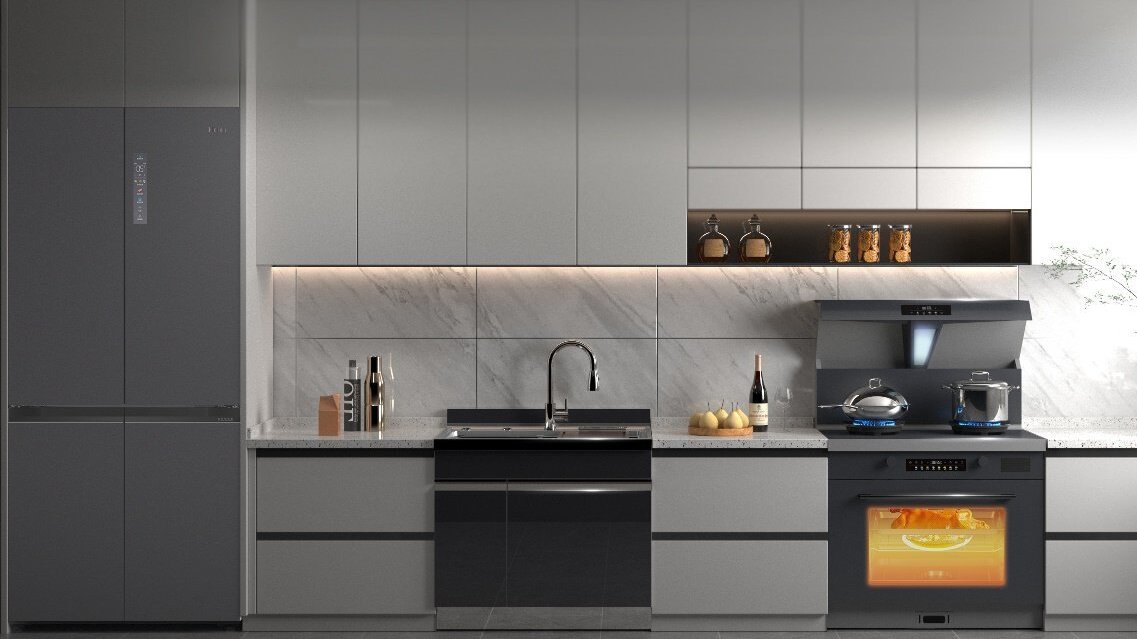Achieving this level of precision in frame manufacturing requires a seamless integration of advanced technologies such as laser pipe cutting machines, laser plate cutting machines, pipe bending machines, and laser welding machines. These technologies, when deployed in coordination, enable the creation of high-quality metal frameworks with exceptional accuracy and repeatability.

1. Laser Pipe Cutting Machines: Precision at the Core
Laser pipe cutting machines are critical in processing the tubular components of integrated stove frames. These laser pipe cutting machines use high-powered lasers—typically fiber lasers—to cut complex shapes and profiles into metal pipes, which are commonly made of stainless steel or aluminum alloys due to their corrosion resistance and strength-to-weight ratio.
Key Advantages of Laser Pipe Cutting Machine:
High Precision and Clean Cuts: Laser pipe cutting machines provide tight tolerances and burr-free edges.
Complex Geometries: Modern CNC-controlled pipe lasers can cut intricate patterns, holes, and notches with ease, which is vital for interlocking frame elements or integrating additional hardware such as fasteners and brackets.
Automation and Speed: These laser pipe cutting machines are often integrated with automatic loaders and unloaders, drastically improving production efficiency and reducing human error.
This significantly reduces the need for secondary processing and boosts manufacturing throughput.
2. Laser Plate Cutting Machines: Forming the Skeleton’s Skin
While pipes form the skeletal frame, flat metal plates often provide the cladding and internal support structures. Laser plate cutting machines are used to create precise plate metal parts that form panels, support brackets, and interior compartments of integrated stoves.
Capabilities and Benefits:
Versatility Across Materials: These laser plate cutting machines can handle a wide range of materials, from thin aluminum plates to thick stainless steel panels, ensuring flexibility in design.
Edge Quality and Detail: Just like laser pipe cutting machines, laser plate cutting machines offer clean cuts with minimal thermal deformation, which is crucial for both mechanical fit and visual appearance.
Nesting Software for Optimization: Advanced software allows manufacturers to optimize part layouts on raw plates to minimize waste by laser plate cutting machines, thereby reducing material costs.
These laser plate cutting machines must not only be accurate in size but also maintain a sleek surface finish, often visible to end-users.
3. Pipe Bending Machines: Shaping the Frame with Precision
Pipe bending machines come into play here, transforming straight pipe sections into curved or angled components without compromising structural integrity.
Technical Insights of Pipe Bending Machines:
Mandrel and Rotary Draw Bending: These methods of pipe bending machines are commonly used for creating tight-radius bends without wrinkling or collapsing the pipe walls.
Repeatability and Accuracy: CNC-controlled pipe bending machines ensure that each bend is performed consistently, which is essential when assembling multiple units on a production line.
Material Consideration: Pipe bending machines must be fine-tuned to the specific material being processed, as different metals react differently to bending forces.
Precision in pipe bending machines ensures that these parts align correctly with flat panels and other frame components during the welding and assembly stages.
4. Laser Welding Machines: Joining with Integrity and Finesse
Laser welding machines provide an advanced solution for joining metal components with minimal heat distortion and maximum strength.
Advantages of Laser Welding Machines in Frame Assembly:
Precision and Minimal Heat-Affected Zones (HAZ): Laser welding machine produces narrow, deep welds with reduced thermal stress, preserving the dimensions and mechanical properties of surrounding materials.
Automation and Robotic Integration: Laser welding machines systems are often integrated with robotic arms, enabling consistent, high-speed welding in hard-to-reach or repetitive areas.
Aesthetic Finish: Especially important for visible frame parts, laser welding machines can be extremely neat and may not require post-weld grinding or polishing.
Laser welding machine ensures the structural integrity of the integrated stove frame, providing strong joints that resist vibration, heat, and corrosion. This is especially crucial in kitchen appliances exposed to thermal cycling and moisture.

Conclusion: A Technological Symphony for Modern Kitchens
Manufacturing the metal frame of an integrated stove is no longer a manual, labor-intensive task. Instead, it has become a refined process powered by cutting-edge technologies like laser pipe cutting machines ,laser plate cutting machines, pipe bending machines, and laser welding machines—all orchestrated in harmony. This synergy not only delivers structural precision but also supports aesthetic excellence and mass production efficiency.

